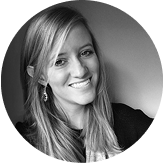How Hard Is It to Get a Job in Advertising?
Breaking into advertising isn’t easy—but it’s far from impossible. Whether you’re aiming for a role as a Copywriter or Art Director, success comes down to persistence, a strong portfolio, and smart networking. This article dives into what it really takes to land your first job in advertising—from understanding agency types and portfolio expectations to mastering the soft skills that make you stand out.

The lights in the agency conference room flicker on. Empty coffee cups line the table. Printer paper with sharpied graffiti of words and comps cover the walls. Someone has scrawled “Big Idea?” in dry-erase marker on the whiteboard.
This is the world so many aspiring creatives dream of stepping into. The late nights, bold ideas, and the thrill of seeing your work out in the world. But before you get to pitch to a client or hear your tagline on TV, there’s one massive hurdle to jump over: getting in.
Advertising has long held this dual reputation of glamorous yet grueling, accessible yet exclusive. Everyone wants in, but few know how to actually make it happen. It’s a game of great work and sheer luck. The truth? Breaking in is competitive
Entry-level advertising jobs, specifically for Copywriters and Art Directors, draw hundreds of applicants. But hear us when we say this: it’s not impossible. Those who break through don’t just have talent; they have preparation, persistence, and a portfolio that proves they’re ready to create.
So, let’s pull back the curtain on what it really takes to land that first job in advertising and discuss how you can stand out in one of the most competitive creative industries out there.
The Reality of Breaking into Advertising
For every open role labeled “Junior Copywriter” or “Junior Art Director,” agencies receive stacks of applicants. The most competitive markets like New York, Los Angeles, and Chicago can see over 300 applicants for a single junior creative position. It sounds daunting, but it doesn’t mean you’re out of luck. It just means you have to know how to play the game.
Many of the competing applicants have a broad background. They either have a vague Communications, Advertising, or Writing undergraduate degree. Maybe they just enjoy writing or designing things in their spare time.
But most didn’t go to a Portfolio School.
Only one gets the gig in the end, so with a portfolio-school level book and the network you build there, you have a much bigger shot of getting an interview and the role!
Big vs. Small vs. In-House Agencies
At the bigger agencies (think BBDO, FCB, Ogilvy, Wieden+Kennedy), applicants often compete with graduates from top portfolio schools or advertising programs. Most (but not all) entry-level roles start with an internship, and you’ll likely only work on one client for a while. The upside? You’ll be surrounded by award-winning creatives, big-budget campaigns, and mentorship opportunities. The trade-off: it’s sometimes harder to stand out.
Boutique or mid-sized agencies, on the other hand, often look for versatile talent. Someone who can write copy and concept social content, or design a banner and storyboard a video. At the smaller shops, everyone wears a lot of hats, including juniors.
It might feel like you’re a squirrel drowning in the deep end of a pool, but ultimately you learn more, touch different brands, and gain more experience early on in your career. The trade-off: smaller agencies are likely already busy, and mentorship might be slim. You may have to figure out how to swim on your own.
In-house agencies, like the creative departments within brands like Kraft, Target, and Amazon, often hire juniors who can deeply understand brand voice, consistency, and collaboration. It’s less about agency glamour, and more about brand depth. Some say in-house agencies offer more work-life balance than a traditional agency. In-house agencies don’t just work on one specific brand product, but you won’t get to play as much with switching from one brand voice to another.
Regardless of where you aim to apply or where you end up landing, hearing “no” will happen weekly. Every creative you admire has a story about the campaign that didn’t sell or the role they really wanted but didn’t get. The trick is to always keep creating. Create while you wait to hear back. Create work outside of the campaign idea that flopped. Create even when you don’t want to. Persistence and work ethic can often be more important than just having talent.

Skills Every Employer Looks For in Juniors
Breaking in isn’t just about having clever ideas, it’s about proving you can turn those ideas into something real. Creativity, strategic thinking, collaboration, and adaptability are all core qualities recruiters look for when hiring creatives. These might sound cliché, but in advertising, they’re daily survival tools.
For Copywriters:
- Clarity, storytelling, and originality are your holy trinity. You need to write headlines that grab, scripts that flow, and copy that sells, all while fitting into character limits.
For Art Directors:
- Strong visual thinking and proficiency in tools like Adobe Creative Suite or AI-assisted design programs are essential. You’re not just making things pretty; you’re communicating ideas visually.
For Everyone:
- Soft skills matter more than people realize. Can you take feedback without an ego? Can you meet deadlines, contribute ideas, and present work confidently? Are you going to be someone fun to work with? Will you need hand-holding? How you present yourself both in your applications and in your interviews matters, and says more about the type of creative you are than you may realize.
Hiring managers often say they want juniors who are both ready and moldable. They don’t expect perfection, they just don’t want to have to babysit you. Show that you’re teachable, proactive, and hungry to learn.
Portfolio Standards: What Recruiters Expect
If you’re applying for a Copywriter, Art Director, or Designer role, your portfolio isn’t optional. It’s your golden ticket.
Recruiters spend less than 60 seconds scanning a portfolio before deciding whether to move on. So, make every second count.
A strong junior portfolio typically includes:
- 5–6 polished campaigns that demonstrate creative range.
- A mix of mediums in said campaigns, featuring print, digital, social, experiential, maybe even a spec film or OOH concept.
- Quality over quantity. One great idea that’s well executed, thought out, and polished beats three mediocre ones every time.
Student portfolios tend to focus on clever ideas, while professional portfolios balance creativity with execution. The more your book looks like real-world work complete with mockups, rationales, and campaign extensions, the more credible you appear.
If you don’t have a polished book yet, don’t panic. Schools like book180 are built to help aspiring creatives craft standout portfolios in just six months with instructors that are real industry creatives from around the globe who know what recruiters and creative directors at agencies actually want to see.

Networking and Industry Events That Help
Talent opens doors, but connections often hold the keys. The advertising world is surprisingly small. Who you know can get you seen faster than a cold LinkedIn application ever will.
If you’re thinking, “but I don’t know anyone in this industry!” You just don’t know anyone yet. Here’s a good place to start:
- LinkedIn: Engage with agency posts, comment thoughtfully, and follow recruiters and creative directors. Send a message to the creatives you admire and ask if they’d be willing to have a virtual coffee and talk about their creative journey, take a look at your work, or ask about their experience job hunting. Networking is key.
- Portfolio reviews & ad clubs: Many cities have events through The One Club, AAF, or Creative Mornings where you can meet working creatives. Portfolio Schools like book180 host review nights for all creatives, even if they weren’t a student at the school. Getting eyes on your portfolio doesn’t just help polish it, it lets people know you’re good at taking and executing feedback.
- Award shows: Even if you’re not entering work yet, attending events like The Clios or D&AD shows your interest and gets you in the same room as people who hire. If you are entering work, great! Award shows are a wonderful way to stand out, meet people, and if you win, you might even land a gig shortly after.
- Online communities: Join Slack, Reddit groups, or student networks. Virtual networking is networking, too, even if it’s not on LinkedIn. You never know who you’ll meet or where you’ll meet them.
At book180, students connect with instructors from top agencies across the world, which gives students a rare opportunity to get feedback and build relationships with industry creatives before even graduating. The earlier you start networking, the better. Don’t beg people for a job, build relationships first.
Common Pitfalls for Job Seekers (and How to Avoid Them)
Even the most talented or experienced candidates can make avoidable mistakes. Here are a few common ones and how to fix them fast:
- Applying and waiting. Don’t just hit “submit.” Email recruiters directly. A short, polite note with your portfolio link can go a long way.
- Ignoring collaboration. Most campaigns are made by teams. If you’re a copywriter, show who you partnered with as an Art Director (and vice versa).
- Sloppy presentation. Typos, inconsistent fonts, messy layouts all signal carelessness. Proofread everything, view your portfolio from different perspectives (phone, web, laptop, desktop), and be consistent with page layouts.
- Quitting too early. We all know the phrase rejection is just redirection. Rejection is normal, especially in this industry. It’s nothing to fear. Keep improving your book, keep networking and building relationships, and keep applying. Every “no” brings you closer to a “yes.”
- Networking too late. Build relationships before you need a job. Don’t start networking when you apply. Do your research and find creatives that work at the agencies you want to apply for. Pick their brain, ask their advice, and do it long before you’ve even applied to the agency. The best opportunities often come through referrals.
Quick fixes: polish your portfolio weekly, seek feedback often, and treat every interaction like a mini-interview.
So, How Hard Is It Really?
Here’s the hard truth: getting a job in advertising is hard, but not because it’s out of reach. It’s hard because the bar for creativity, curiosity, and craft is high and keeps getting higher.
If you build a strong portfolio, develop the right mix of skills, and make genuine connections, the doors start to open. You don’t need to be the best on day one, you just need to show that you’re ready to learn, contribute, and grow.
Because once you’re in, you’ll realize that the challenge of getting into advertising is nothing compared to the thrill of creating it.
Ready to strengthen your chances?
Enroll in book180’s 6-month program or the portfolio prep classes and start building campaigns that stand and open doors to your dream job in advertising.








